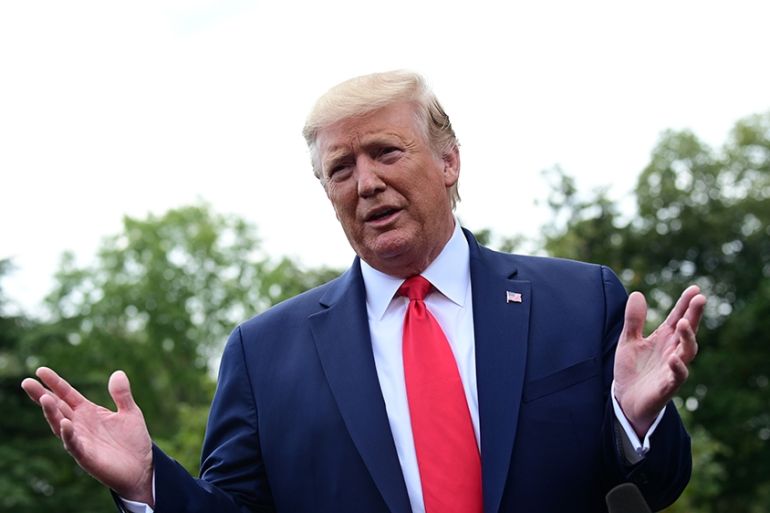Trump plans middle income tax cut for 2020
The proposal, which currently lacks details, could face challenges from a Democrat-controlled House of Representatives.

President Donald Trump said Thursday that he’s planning a tax cut directed at the middle class that will be announced in the next year.
“It will be a very substantial tax cut,” Trump told congressional Republicans at a retreat in Baltimore. He said the tax cut would be “very, very inspirational” without providing details.
Keep reading
list of 4 itemsKey takeaways as Cohen faces more questioning on day 17 of Trump’s trial
Michael Cohen resumes testimony in Trump hush-money trial
Key takeaways as ex-Trump lawyer Michael Cohen testifies in New York trial
Trump spoke a day after deciding against cutting the tax on capital gains by indexing gains to inflation. That decision was announced late Wednesday after a meeting earlier between the president and his economic advisers, who discussed whether to move ahead with the tax break.
The administration has also put off the idea of a possible cut in payroll taxes, Treasury Secretary Steven Mnuchin told CNBC earlier Thursday. Mnuchin said that Trump was focused instead on a second round of proposed tax cuts.
But a Trump-backed tax cut would face an a near-impossible battle in Congress in advance of the 2020 elections. Constitutionally, tax legislation must originate in the House, which Democrats currently control. They are unlikely to back any legislation that could give Trump a victory during the presidential election campaign.
Key Democrats in Congress, including House Speaker Nancy Pelosi and House Ways and Means Committee Chairman Richard Neal, have said they could consider cuts to levies on the middle class, but those cuts would have to be offset with higher taxes on the wealthy.
That trade-off — if Trump and Democrats could compromise — could cause no-new-tax Republicans to balk, making agreement nearly impossible in a divided government.
Trump last month floated the idea of indexing capital gains to inflation or cutting payroll taxes as a way to jolt the U.S. economy, which has shown warning signs of a slowdown. But he later said that cutting capital gains taxes would be seen as “somewhat elitist” because it would benefit the wealthy.
Most of the benefits of indexing would go to high-income households, with the top 1% receiving 86% of the benefit, according to estimates in 2018 by the Penn Wharton Budget Model. The policy could reduce tax revenue by $102 billion over a decade, the model found.
This isn’t the first time the White House has floated a tax cut when facing political headwinds. Last fall, ahead of the midterms where Republicans ultimately lost their majority in the House, Trump suggested he would cut taxes for middle-earners by 10%.
The tax cut announcement came as a surprise to administration officials and Trump’s allies in Congress. That plan was never released.
Again in August, Trump said “a lot of people” would like a cut in payroll taxes, but then said that a reduction isn’t needed. A day later, he said he was still open to a payroll tax break and cutting taxes for investors by indexing capital gains taxes to inflation, a move some of his advisers think he could do without Congress.
And late in 2017, as the Republican tax overhaul was taking shape and criticism arose that it would favor the wealthy and corporations, Trump promised relief for the middle class. But that did not make it into the final legislation.